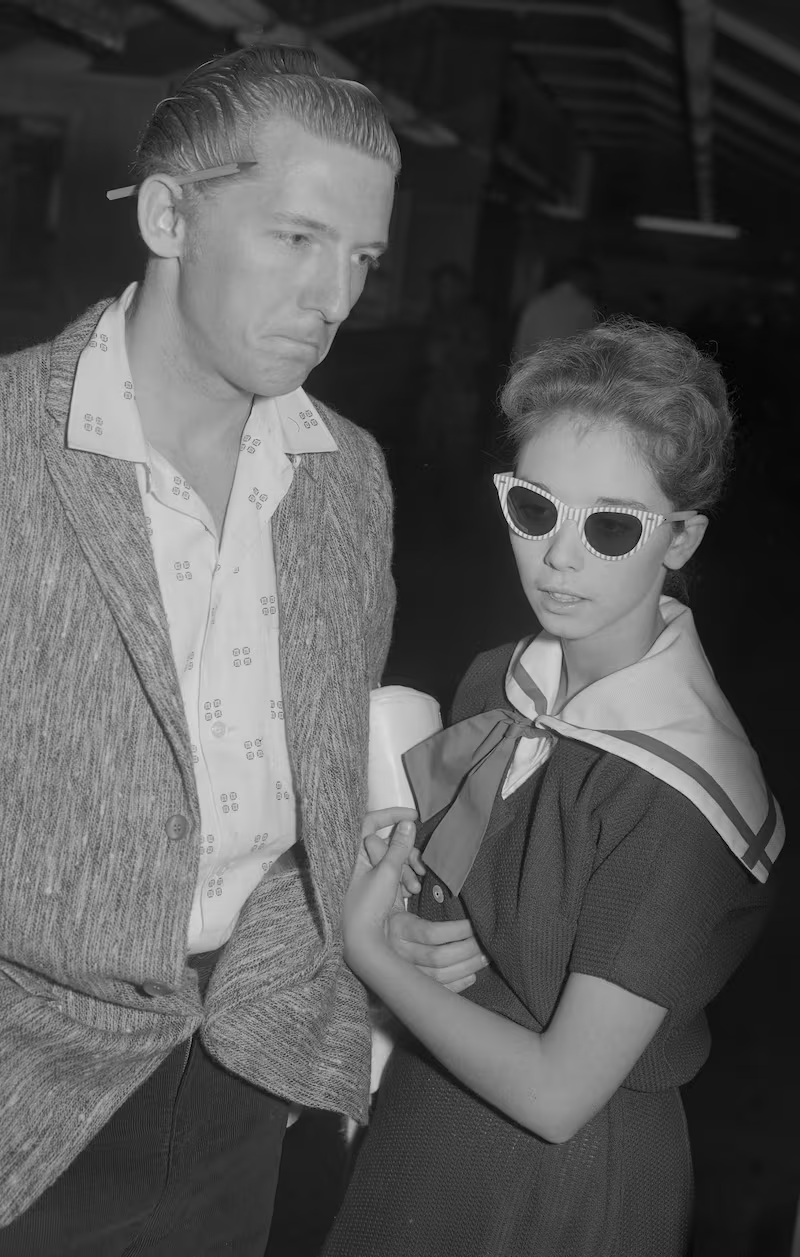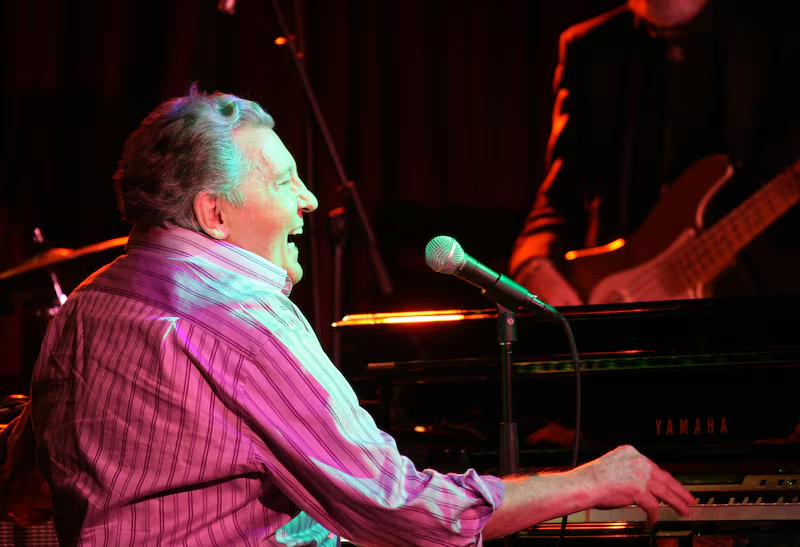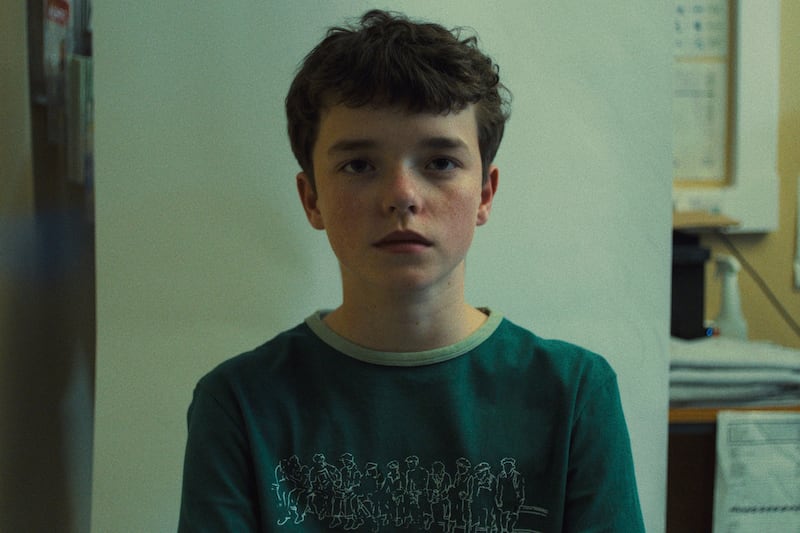Born September 29th, 1935
Died October 28th, 2022
Jerry Lee Lewis, the hard-driving rockabilly artist whose pounding boogie-woogie piano and bluesy, country-influenced vocals helped define the sound of rock’n’roll on hits such as Whole Lotta Shakin’ Goin’ On and Great Balls of Fire, and whose incendiary performing style expressed the essence of rock rebellion, died on October 28th at his home in DeSoto County, Mississippi, south of Memphis, Tennessee. He was 87.
Lewis was 21 in November 1956 when he walked into Sun Studio in Memphis and, presenting himself as a country singer who could play a mean piano, demanded an audition.
Adolescence: Five truths about our teenage boys we need to address urgently
Her ‘no’ was clear. She did not want to go home with him. Still he went on. And on
The 100 best Irish books of the 21st century: No 25 to No 1
‘One of the lowest points of my life’: Elizabeth Day on marriage breakdown, IVF and How To Fail
His timing was impeccable. Sun Records had sold Elvis Presley’s contract to RCA Records a year earlier, and it badly needed a new star to headline a roster that included Carl Perkins, Johnny Cash and Roy Orbison.
Lewis more than filled the bill. His first record, a juiced-up rendition of the Ray Price hit Crazy Arms, was a regional success. With Whole Lotta Shakin’ Goin’ On, released in April 1957, he gave Sun the breakout hit it was looking for.
Although initially banned by many radio stations for being too suggestive, Whole Lotta Shakin’ Goin’ On reached a nationwide audience after Lewis performed it on The Steve Allen Show. It rose to No 3 on the pop charts and sold about 6 million copies worldwide, making it one of the biggest hits of the early rock’n’roll era.
Overnight, Lewis entered into direct competition with Presley. As Lewis saw it, there was no contest.
“There’s a difference between a phenomenon and a stylist,” he told record-collector magazine Goldmine in 1981. “I’m a stylist, Elvis was the phenomenon, and don’t you forget it.”
In November 1957, Sun released Great Balls of Fire, a high-octane sexual anthem written by Otis Blackwell, whose other songs included the Presley hits All Shook Up and Don’t Be Cruel.
The song again featured Lewis’s distinctive barrelhouse piano style, with the left hand insistently beating the keys and the right executing rippling glissandos, while he gave a leering swoop to lines such as “Kiss me, baby – mmmm, feels good”. The record reached No 2 on the pop charts, selling more than 5 million copies in the United States alone.
Jerry Lee Lewis was born Sept. 29th, 1935, in Ferriday, Louisiana, to Elmo Lewis, a carpenter, and Mamie (Herron) Lewis. When he was a boy, he and two of his cousins – future evangelist Jimmy Swaggart and future country singer Mickey Gilley (who died this year) – liked to sneak into a local dance hall, Haney’s Big House, to hear top blues acts perform.
Jerry Lee showed an aptitude for the piano, and his father borrowed money to buy him one.
At 14, he was invited to sit in with a band performing at a local Ford dealership, which was celebrating the arrival of the 1950 models. He played Drinkin’ Wine Spo-Dee-O-Dee – the tune, a hit for Stick McGhee in 1949, would be a minor pop hit for Lewis in 1973 – and took home nearly $15 when someone passed the hat.
He soon became a regular at clubs in Natchez, just across the Mississippi river, and on the Natchez radio station KWKH. His deeply worried mother, a Pentecostal Christian, enrolled him in the Southwestern Bible Institute in Waxahachie, Texas.
“I didn’t graduate,” he told the New York Times in 2006. “I was kind of quit-uated. I was asked to leave for playing My God Is Real boogie-woogie style, rock’n’roll style. I figured that’s the way it needed to be played.”
His scorching performing style suited his material. Lewis, sometimes called by his childhood nickname the Killer, discovered that audiences loved it when he kicked his piano bench aside and attacked the keyboard standing up. Possessed by the devil’s music, as he called it, he writhed and howled, raked the keyboard with his right foot and tossed his wavy blond hair until it looked like a frightwig.
“Nobody had a more creative approach to the music or a more incendiary approach to performing it,” Peter Guralnick, author of the definitive two-volume Presley biography Last Train to Memphis and Careless Love, said in an interview for this obituary. “He had the ability to put his stamp on every kind of material he recorded.”

But Lewis fell as quickly as he had risen. In 1958, as his third hit, Breathless, rose to No 2, he embarked on what was meant to be a triumphal tour of Britain. Reporters discovered that the young girl travelling with him, Myra Gale Brown, was his 13-year-old bride – and his cousin – and that Lewis had still been married to his second wife when he recited the vows for his third marriage.
Asked by reporters if 13 wasn’t a little young to be married, Myra Lewis said: “Oh, no, not at all. Age doesn’t matter back home. You can marry at 10 if you can find a husband.”
The revelations caused a scandal on both sides of the Atlantic. Lewis cut his tour short and returned to the US, where he quickly discovered that his career as a rock star was over. His recording of High School Confidential, from the movie of the same name, eventually came out – Sun feared to release it after the scandal broke – and reached No 21. But his subsequent records failed miserably.
Sun, which Lewis would leave in 1963, was reluctant to promote him. Many radio stations refused to play his music. Concert dates dried up. Lewis seemed mystified by the response. “I plumb married the girl, didn’t I?” he said to one reporter.
Reduced to performing in small clubs for a few hundred dollars a night, Lewis found redemption in country music. At Smash Records, which signed him in 1963, a string of failures led producers to suggest that he return to his roots and record some purely country songs.
It was a natural fit. Both of his biggest rock’n’roll hits had topped the country charts, and his soaring, resonant voice, in the vein of Jimmie Rodgers and Hank Williams, lent itself equally to up-tempo honky-tonk numbers and cry-in-your-beer laments.
His first country release, Another Place, Another Time, reached No 4 on the Billboard country chart in 1968, and he scored top 10 country hits that year with What’s Made Milwaukee Famous (Has Made a Loser Out of Me), She Still Comes Around (to Love What’s Left of Me) and To Make Love Sweeter for You.
His hot streak continued into the 1970s. He would eventually record nearly two dozen top 10 country singles, ending with 39 and Holding in 1981, and nearly as many top 10 country albums. He even managed to creep on to the pop charts in 1972 with a recording of the Kris Kristofferson song Me and Bobby McGee and a cover version of the Big Bopper hit Chantilly Lace.

Years of heavy drinking and drug abuse began to take their toll, however, and his life for much of the 1970s and 1980s was a sad catalogue of family catastrophes, health crises and run-ins with the IRS and police.
His troubled son Jerry Lee Jr died in a car crash in 1973.
In September 1976, while watching television at his wife’s house, Lewis accidentally shot his bass player, Norman Owens, in the chest with a .357 Magnum handgun after announcing, “I’m going to shoot that Coca-Cola bottle over there or my name ain’t Jerry Lee Lewis.” Owens survived and filed a lawsuit. Two months later, Lewis drove his Lincoln Continental into the front gates of Graceland, Presley’s mansion in Memphis, just hours after being arrested and jailed on a drunken-driving charge. A guard later told police that Lewis, waving a pistol, had demanded to see Presley and refused to leave.
Repeat visits to hospitals and rehabilitation centres ensued. Internal bleeding from a tear in his stomach lining almost killed him in 1981.
His fourth wife, Jaren Pate, drowned in a friend’s swimming pool in 1982. His fifth wife, Shawn Michelle Stephens, died after taking an overdose of methadone in 1983.
In 1985, after doctors removed half his stomach to correct a bleeding ulcer, Lewis slowly began to settle down.
His marriage to Kerrie McCarver ended in divorce in 2004.
In 2019, he suffered a serious stroke that left him unable to play the piano. A year later, however, he recorded an album of gospel songs in Nashville and, during the session, found that his right hand had begun moving, allowing him to pound the keys. That album has yet to be released.
He is survived by his wife, Judith Coghlan Lewis; his children, Jerry Lee Lewis III, Ronnie Lewis, Phoebe Lewis and Lori Lancaster; his sister, Linda Gail Lewis, who is also a singer and pianist; and many grandchildren.
– New York Times
2022 The New York Times Company










